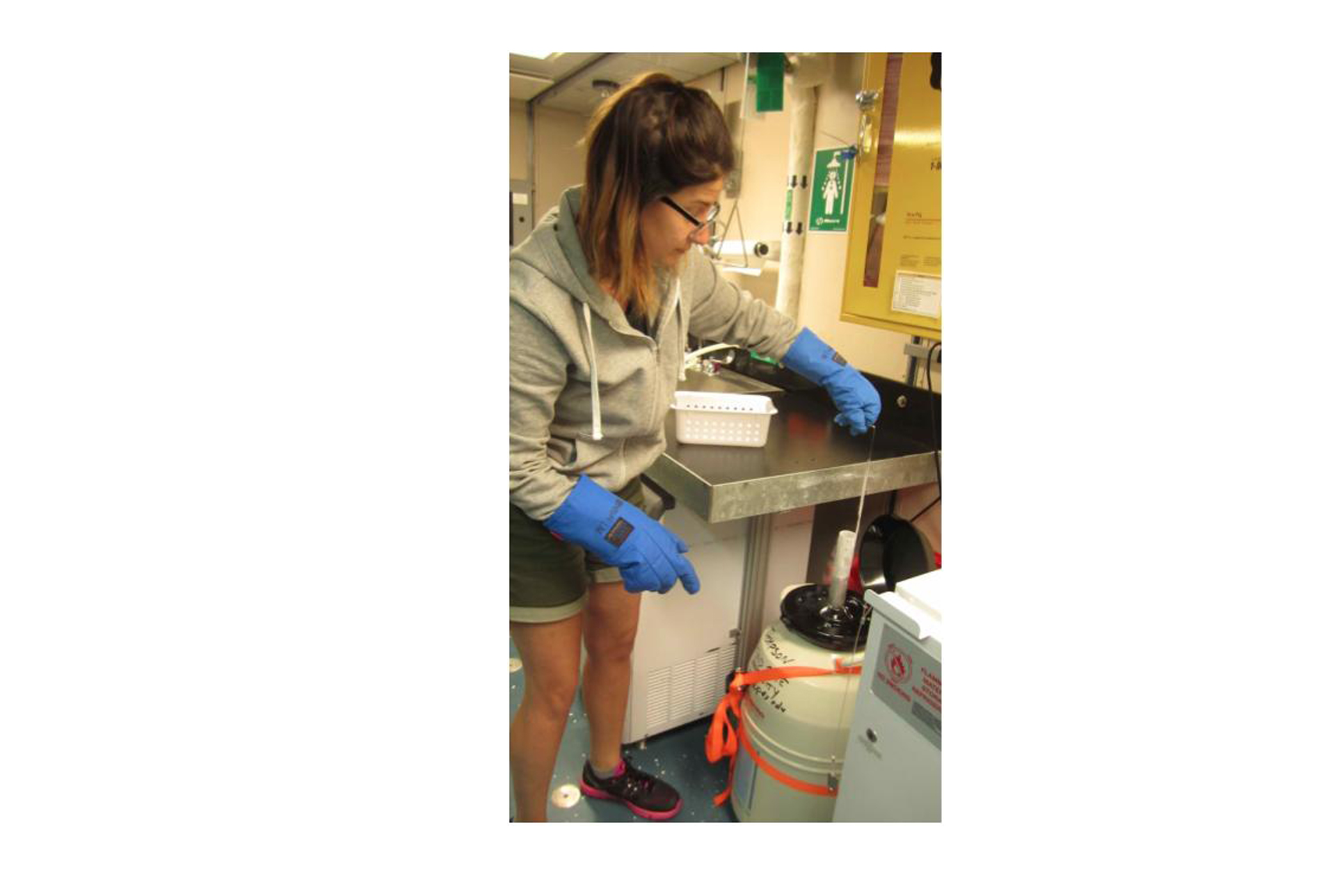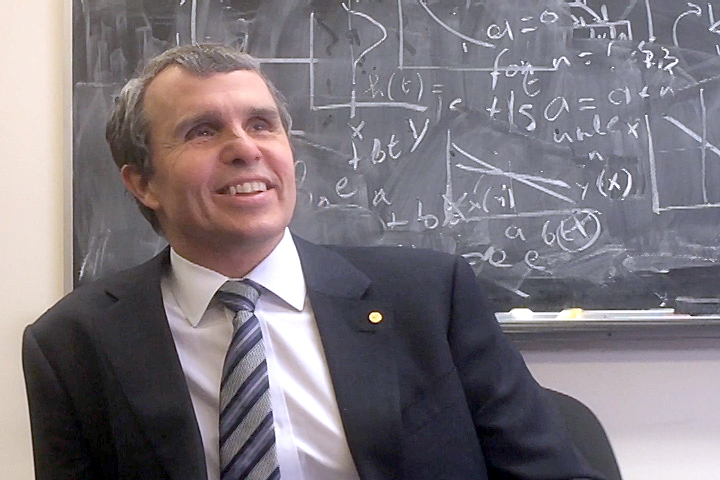Recent Portland State micro- and molecular biology graduate Kathleen Kouba embarked on an oceanographic research project in an unusual part of the ocean this spring to collect samples of a phytoplankton that supplies 50 percent of the Earth’s oxygen.
Kouba, the only representative from PSU on the University of Alaska-operated research vessel R/V Sikuliaq, joined members of the Applied Physics Lab from the University of Washington for five weeks between March and April 2017. Though the APL team operated its own project, the Submesoscale Mixed-Layer Eddies Experiment that studied the purely physical nature of ocean mixing in the North Pacific Subtropical Front, both projects may prove to benefit each other in the future.
The research crew targeted three sections of the NPSF, located between Hawaii and Oregon, according to Dr. James Girton from UW, because warm and cool waters mix in this small section of ocean in ways not reliably represented in global ocean models.
Kouba and Dr. Anne Thompson, PSU’s principal researcher who stayed behind during the trip, partnered with the APL team to collect samples of Prochlorococcus in order to see how different depths, temperatures and salinities available in this part of the ocean might affect its population over time.
“This type of cell makes up about half the oxygen on earth and is important to regulating the carbon cycle,” Thompson said, explaining why Prochlorococcus is important to research. Though Kouba could not study any of her samples in real time on the Sikuliaq, Thompson said Kouba and several other research teams, including PSU undergraduates and a science teacher from David Douglas high school, will be studying the phytoplankton samples for several years on campus.
Kouba and the APL team used weather data to figure out where and when to release the ship’s rosette, or large carousel, which held 24 metal bottles that resemble 5-foot-tall oxygen canisters. The bottles, which are commonly called CTDs, collected Prochlorococcus and measured the water’s conductivity, temperature, and depth, as well as oxygen and fluorescence levels as the rosette sank down to about 200 meters each drop.
Sensitive instruments recorded the physical properties of the water as the rosette went down, then Kouba flash-froze water from each of the bottles when they resurfaced. Collecting water at this depth took 45 minutes to an hour, Kouba said, then collecting and freezing samples in small glass vials took another 4–5 hours.
Some of the cells were separated from the water for DNA analysis through a filter created at PSU. This was done in one of several full science labs on the ship, in which instruments had to be tightly secured in place in anticipation of the ship rocking 10 degrees or more at any time. Live videos touring the Sikuliaq show handrails and mirrors placed all over the ship for support. At one point, Kouba said the ship tilted while she was collecting and freezing water samples, and spilled vials could be found down the hallway several hours later.
Kouba worked a 24-hour floating shift, rather than 12-hour shifts, because she was the only researcher from PSU. “You work really hard because you know when you get out there you only have a set amount of time to gather [and freeze] as much data as you can,” Kouba said. “It reminds me of one of those money tornado things on game shows where you are just going to move as fast as possible because you want to get as much as you can.”
Kouba’s shifts could run between 4 and 12 hours at a time, with 2–4 hours of sleep in between. On top of collecting phytoplankton, Kouba was responsible for writing down some of the APL’s data that would be useful for studying samples back at PSU. “We will apply all the notes I took on what the water looked like while I was out there and what we actually see now in the samples I brought home,” Kouba said about the research ahead.
Dr. James Girton, the principal researcher on the APL SMILE team, said the SMILE research is important because the ways in which masses of water mix in the NPSF are not represented on large-scale ocean models. “The goal is to come up with some kinds of algorithms or schemes that can be used in models in the future,” Girton said. He added that the SMILE team is not necessarily looking for any “new” physics, but their research might fill some missing gaps relevant to biological study of the ocean.
“We think that the processes of vertical motion and lateral motion around fronts and currents in the ocean do relate to the air-sea transfer of gases and heat and also to the mixing of nutrients, which are important for the food chain,” Girton said. Because Prochlorococcus changes its pigmentation at different depths of the ocean, according to PSU’s project research page, collecting samples during different mixing periods observed by the APL team could reveal how quickly the phytoplankton adjusts to changes in its environment.
Both research teams anticipate applying for more funding to continue researching the data they collected on their five weeks at sea. Kouba said she anticipates working with Thompson for at least the next year, then might consider graduate school or other field research. Kouba said she appreciates the opportunities Thompson and other Biology department faculty have offered her, but said she encouraged other students to take field research opportunities not only to advance their careers but to experience interpersonal growth.
“None of [the APL researchers] would be [on the Sikuliaq] if they weren’t able to adapt quickly to different situations,” Kouba said. “Every [PSU science student] should do a little bit of field work. It lets you know where your boundaries are, and even then, how to push them.”
Links to Kouba’s and the APL team’s easy-to-read blogs can be found here.






